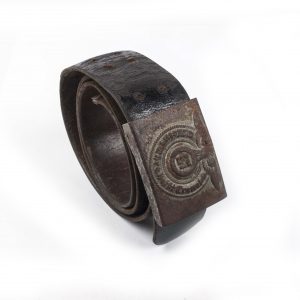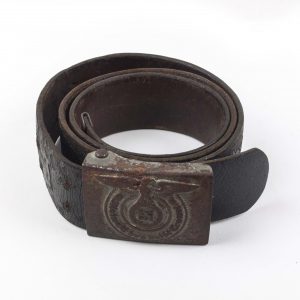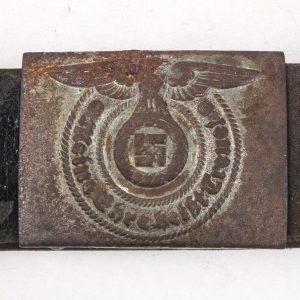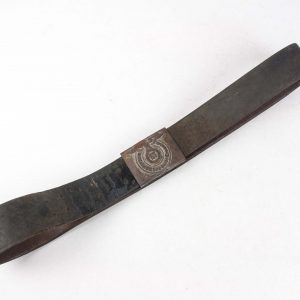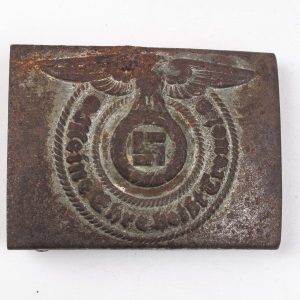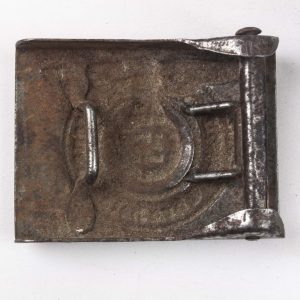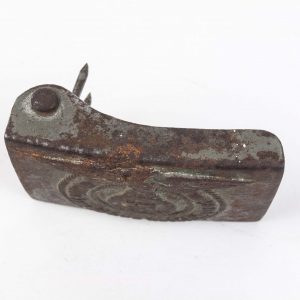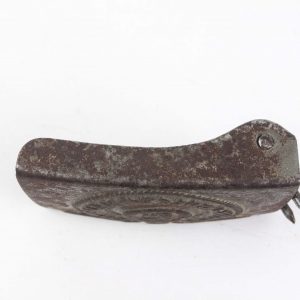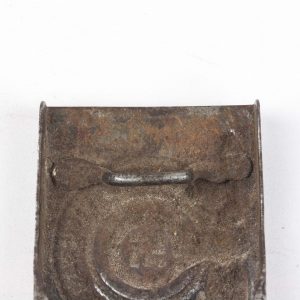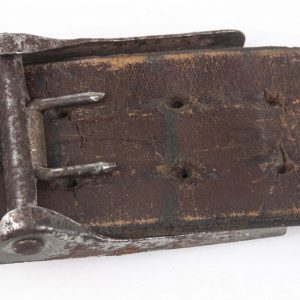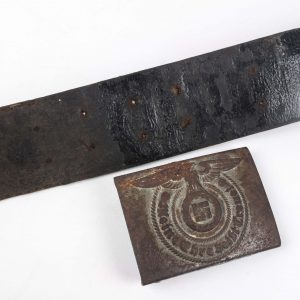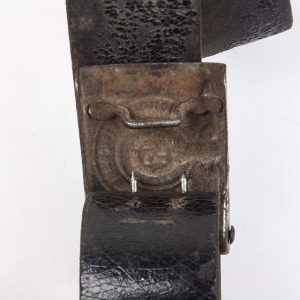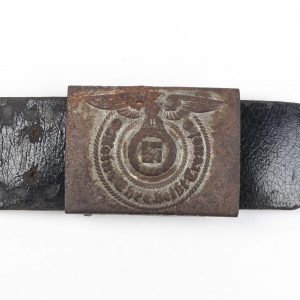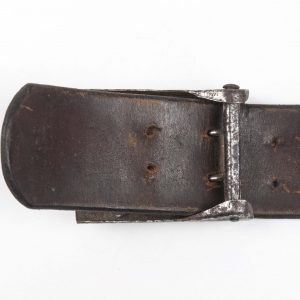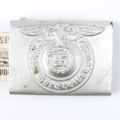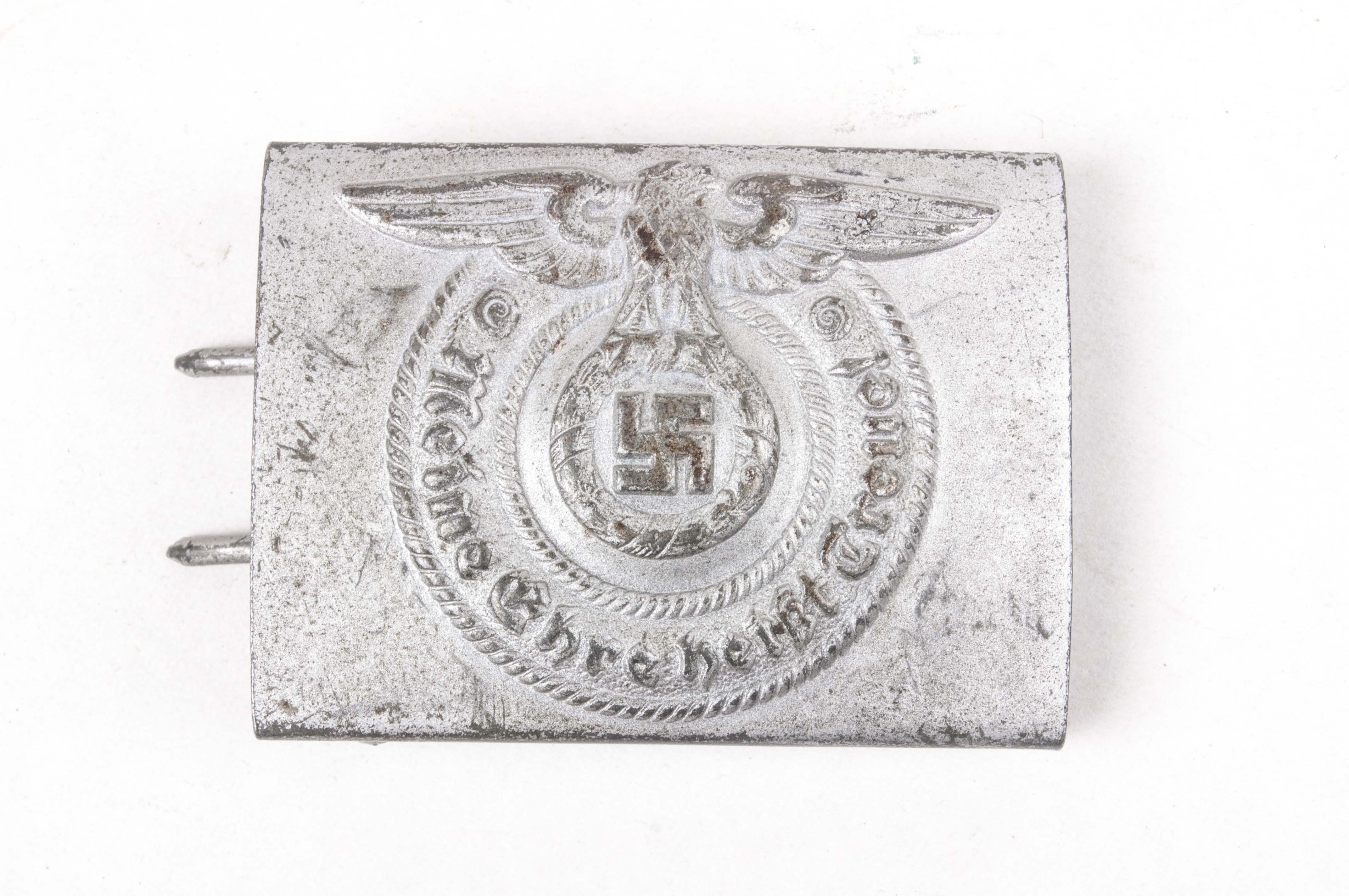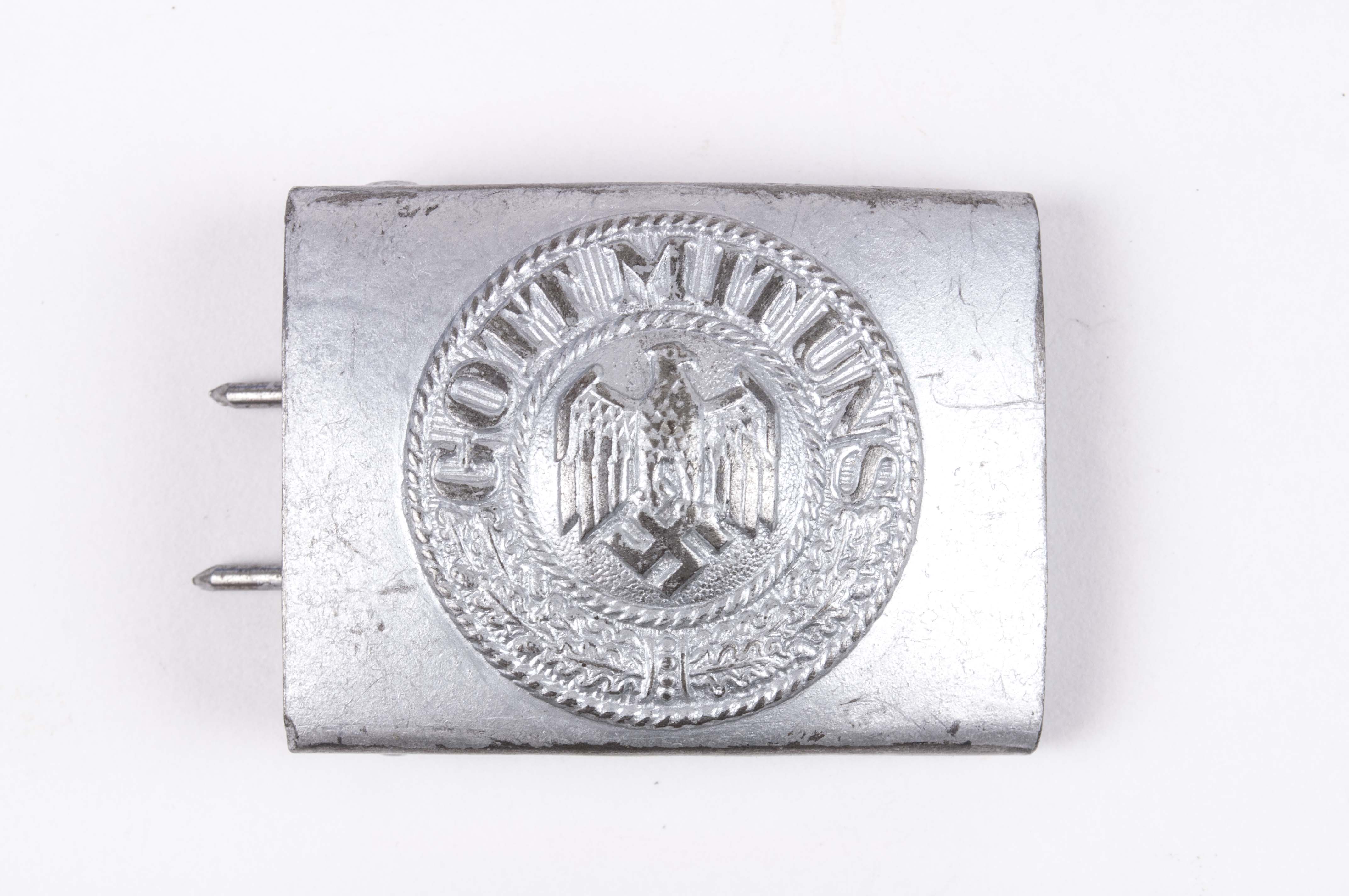Steel belt buckle – Waffen-SS – Unmarked Overhoff
From even before world war one the Germans and many other european armies had distinctive belt buckles that locked the belt in place and at the other hand distinguished the individual wearers service branch. The German military belt buckles or Koppelschloss from world war two can be sorted in a few categories being Heer (Army), Luftwaffe and Waffen-SS. Next to these categories one could sort the difference between different colours, designs, makers, dates, materials, uses and absence or presence of leather tab. The first military buckles introduced in the Reichswehr Era where of a stamped Alpacca construction with a brass catch. This type of material and manufacture was also used in the first models of Waffen-SS belt buckles. The first Heer, Kriegsmarine and Luftwaffe belt buckles with swastika where introduced in 1936 and manufactured in moulded Aluminium.
In 1940 the aluminium belt buckles ceased production and the painted steel belt buckles where introduced for all service branches. Until 1942 they featured a leather tab on which the manufacturers name, town and date of manufacture. The Waffen-SS belt buckles never had such tabs! In 1943 the Heer Einheitkoppelschloss in a dark blue colour known as Graublau was introduced. I can not find any reference to it as of now, but in my opinion this might well be a buckle meant for all branches of the Wehrmacht and not just the Heer and Kriegsmarine.
Next to the German armed forces most paramilitary organizations had their own belt buckle too. I will mostly focus on the German military issue belt buckles but I will photograph private purchase parade buckles when I have the chance.
Branch: Waffen-SS
Motto: Meine Ehre heißt Treue
Markings: Unmarked
Maker: Overhoff & Cie, Lüdenscheid
Year: –
Material: Stamped steel, zinc coated and painted silver
Paint: Silver
Notes: This is a unmarked Overhoff buckle. This belt and buckle was used in the Ardennes offensive and is still on it’s original belt. This belt was found in Malemprè near Manhay. This village was heavily fought over by troops of the 2nd SS Panzer Division Das Reich.



